The Japanese game became symbolic of how an entire generation lost the art of playing outdoors.
O
Our virtual lives have taken on a new significance amid seemingly endless quarantines and requests for social distancing. Many find comfort and relief from boredom in the aether of social media, through streaming services like Netflix or by trading digital turnips with friends and strangers to outfit the imaginary islands of Animal Crossing: New Horizons. Covid-19 certainly accelerated this digitisation of socialisation, but it didn’t create it. The seeds of the phenomenon first blossomed decades earlier, in another viral boom, one spread through toy stores and televisions rather than microbes: the Pokemon fad of the late ’90s.
A portmanteau of the original title – Pocket Monsters – Pokemon was not just a video game but also a collection of trading cards and an anime series. Released in its home country in 1996, Pokemon debuted in the US in August 1998. Although it was made in Japan, for a moment at the turn of the 21st Century, no corner of the world was immune from what came to be called “Pokemania”.
Just one year later, 55,000 eager boys and girls besieged a Minneapolis shopping centre chosen as the start of a Nintendo-funded Pokemon Summer Training Tour. At the end of 1999 Nintendo announced the game had earned some $5bn (GBP4bn) – which at the time was the size of the entire US video game industry.
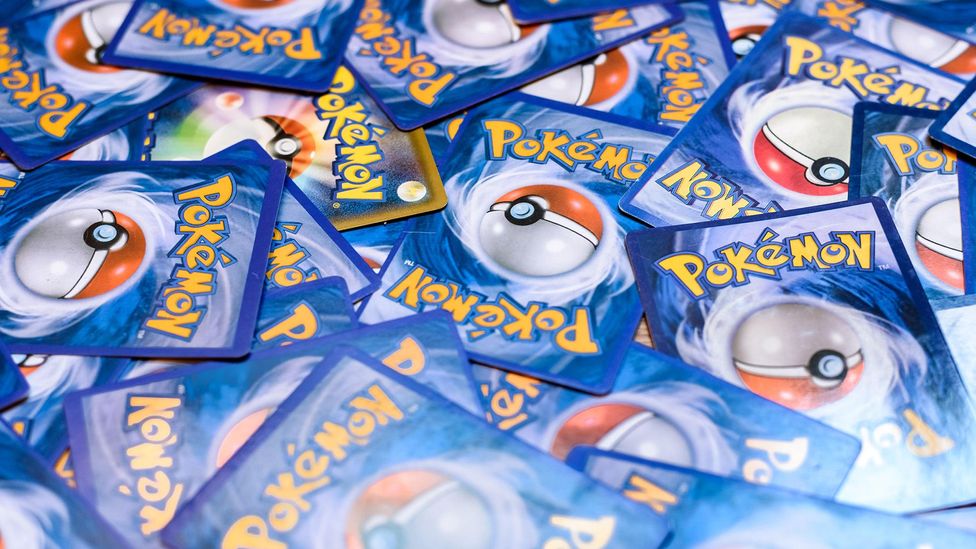
Pokemon trading cards caused such disruption in classrooms in the UK, many schools banned them (Credit: Alamy)
The craze wasn’t limited to the video game; the Pokemon brand proved so popular that in the United Kingdom many schools banned students from trading Pokemon cards. When Pokemon: The First Movie debuted in US theatres on a weekday in 1999, so many children played truant from school to see it that the New York Times dubbed it the “Pokeflu.” And its global reach was such that anthropologists studying the supposedly “Stone Age” Dani tribe of Indonesia’s remote Irian Jaya reported encountering children running around the village dressed in Pokemon outfits.
More like this:
– How gaming became a form of meditation
– The anime series that saved me from burnout
– Japan’s unexpected relationship with reggae
By the early ’90s, Nintendo was making more money than all of Hollywood’s top five studios put together, with more children surveyed recognising Mario than Mickey Mouse. The spectacular success story was due to a confluence of factors; chief among them was the implosion of the once-dominant US home-gaming industry in a 1983 crash. The ingeniously engineered Nintendo Entertainment System, invented that same year in Japan, arrived on Western shores two years later in 1985.
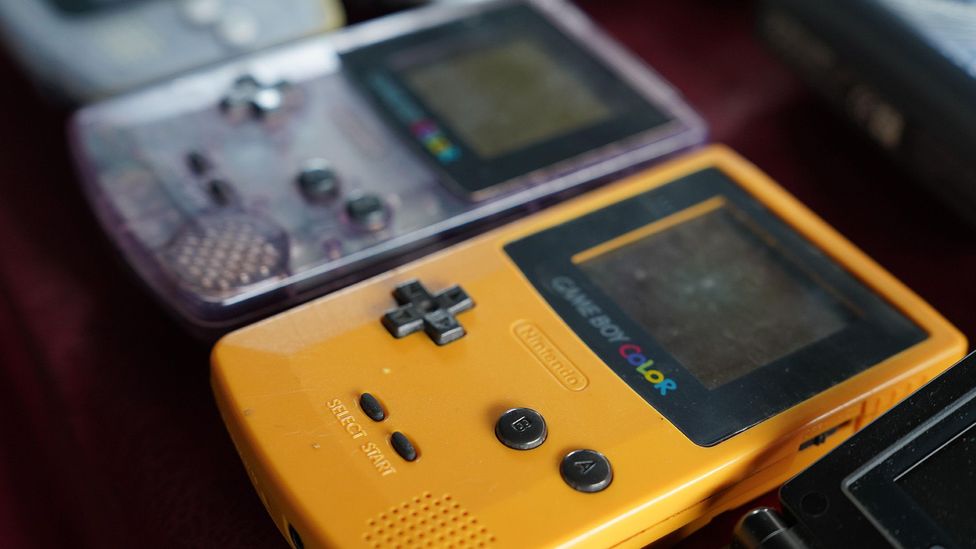
Pokemon was first released in 1996 on the Nintendo Game Boy in Japan and in the US two years later (Credit: Alamy)
Arcade-quality graphics and sound, leaps and bounds beyond those of American- and British-designed predecessors, allowed a new generation of Japanese game designers to transmit their unique sensibilities to children around the world through smash-hit games such as Metroid, Castlevania, and Super Mario Brothers. But this triumph would pale in comparison to that of the Pokemon. Their arrival on the gaming scene as a pair of cartridges for the handheld Game Boy foretold a momentous change in the way many children, and later adults, would spend their leisure time.
What was it about this menagerie of pocket-sized monsters that so bewitched children around the globe? To many Western and Japanese observers, Pokemon seemed to have materialised out of thin air. But it was actually the brainchild of a young man who had spent an adolescence immersed in video games.
Satoshi Tajiri was just 24 when he came up with the concept in 1990, a year after Nintendo’s then-groundbreaking portable Game Boy system went on sale. But the development of the game stretched out for some six years – a veritable eternity in the game industry, and by which time the Game Boy felt downright antiquated in comparison to the increasingly high-tech machines of rival companies.
The X Factor
Competitive gaming has been with us since the dawn of video games. In the seminal Pong, created by US company Atari in 1972, two players squared off in a virtual ballgame played out between glowing paddles of light. The first Pokemon games were a quantum leap beyond those simple arcade-gaming experiences. This was a different sort of play, by turns explorative and meditative, with little of the violence associated with so many digital fantasies.
Set in a fictional countryside populated by wild monsters, Pokemon Red Version and Blue Version compelled players to explore the fields, rivers, and forests of a fantasy world in search of monsters – not to kill but to tame and train. Part of the game was devoted to battle, but an equal or even larger part focused on collecting the imaginary beasties into a virtual menagerie.
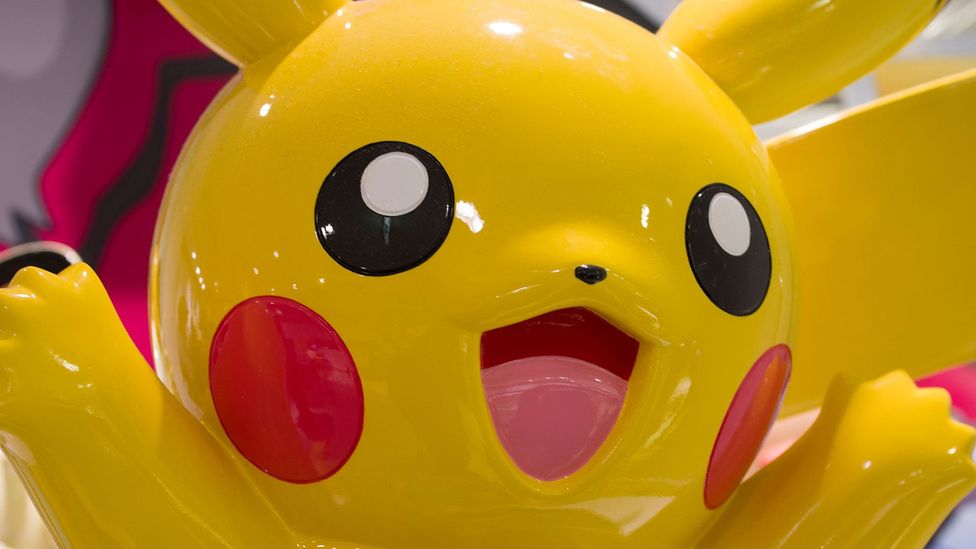
Nintendo initially feared that the Pokemon characters were too cute for US audiences (Credit: Alamy)
Key to the endeavour was that neither the Red or Blue Version of the game contained a full set of all 151 of the critters. The only way to complete the collection was through networking, in both senses of the word: seeking out a friend with the other version and linking your Game Boys using a special cable. So connected, two players could battle with one another’s Pokemon – or just as often, quietly trade them between themselves.
“I imagined an insect moving back and forth along the cable,” explained Tajiri to Time magazine in a 1999 issue entirely devoted to the Pokemon phenomenon. “That’s what inspired me.” This feature offered millions their first taste of a more cooperative virtual experience, encouraging players to venture out and find friends rather than play in solitude.
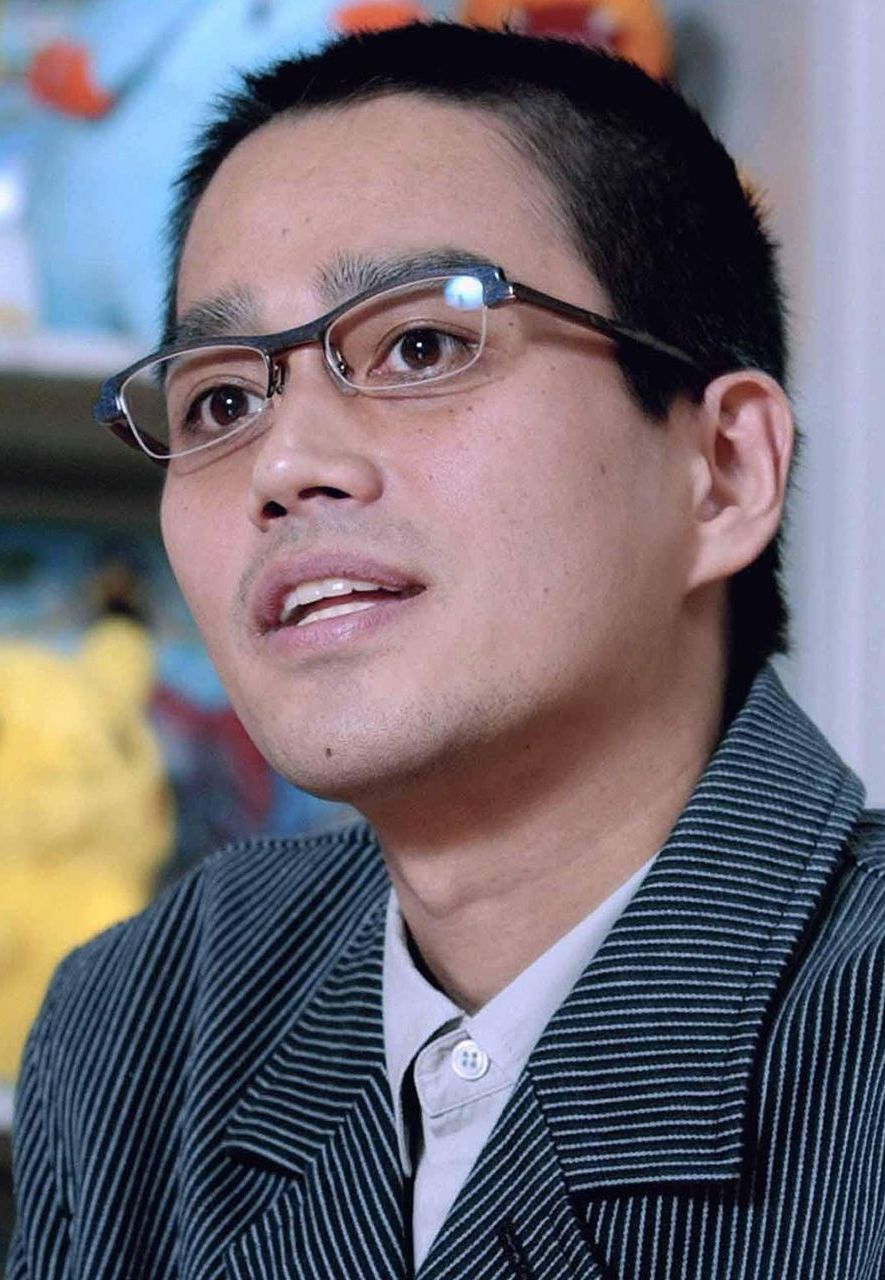
Satoshi Tajiri (Credit: Alamy)
It was so different, in fact, that nobody at Nintendo quite knew what to make of the game. At first, there doesn’t even seem to have been much of a push to export it. Shigeru Miyamoto, creator of Mario and an adviser to Tajiri during his efforts, explained in an interview that he was told “that this kind of thing would never appeal to American audiences.” The problem, as Nintendo’s brass saw it, was that the whole thing was too kawaii – too cute. The rounded, huggable-looking Pocket Monsters looked more like relatives of Hello Kitty than the ferocious goblins of the average fantasy-quest. So too the heroes, who in being schoolchildren stood in stark contrast to the usual macho men or femme fatales of action-adventure games.
Nowhere to play
Tajiri was born in 1965, 20 years after Japan lost World War Two. The world in which he grew up bore little resemblance to that of his grandparents’ generation. Before the war, Japan was a largely agrarian society. Then its cities were bombed to ashes by incendiary and nuclear weapons. By 1968 the nation reinvented itself as the factory to the world, elevating the island nation from cinders into the planet’s second largest economy. Babies boomed and suburbs sprawled as superhighways and bullet-train lines snaked through the countryside, swallowing natural resources at a rapid clip.
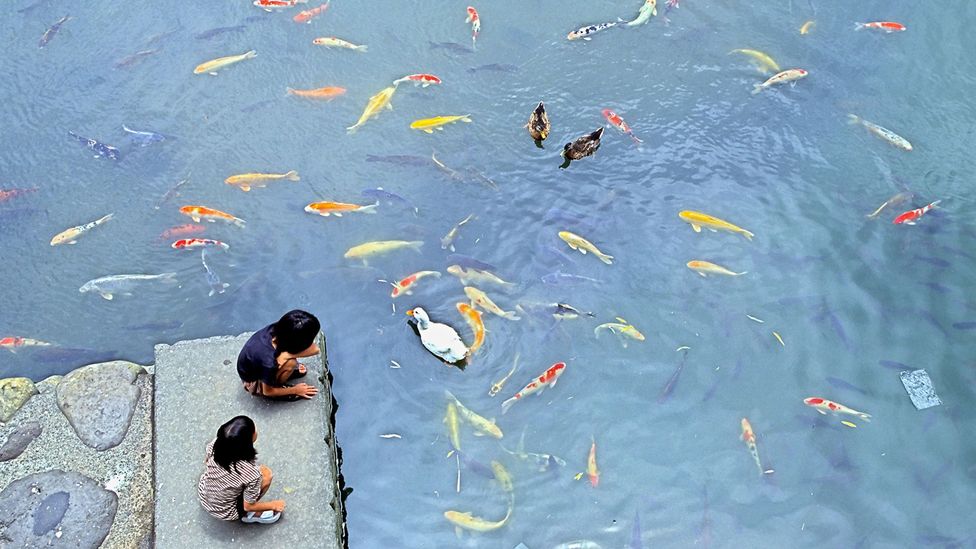
Creator of Pokemon Satoshi Tajiri mourned a childhood spent playing in nature (Credit: Alamy)
“I was raised in Machida, which was in Tokyo but still had a lot of nature,” Tajiri recalled in an interview he gave in 2000, reminiscing about a childhood spent catching tadpoles and crayfish. “But when I was in junior high school, the fishing spot in front of my train station disappeared and a video game arcade appeared in its place. I couldn’t catch bugs anymore. That’s when I started playing Space Invaders and Galaxy Wars.” Immersing himself in the virtual battles unfolding onscreen in arcade games, Tajiri became what Japanese called an otaku – a fan so obsessed that their hobbies come to crowd out virtually everything else in their lives.
In a certain sense, the launch of Pokemon in Japan in the late ’90s came at the perfect time. By that time, Japan’s ‘bubble economy’ had burst, ushering in a period of socioeconomic malaise so profound that it would come to be known as the “Lost Decades”. Pundits coined frightening phrases to describe new societal ills afflicting the nation’s youth: ‘parasite singles’, gainfully employed young adults who remained in their parents’ homes rather than starting families of their own; hikikomori (shut-ins) who dropped out of society to dwell in their childhood bedrooms.
With all of the finger-pointing going on, few stopped to ponder a sobering fact. Many children were increasingly choosing to stay indoors less out of choice but because typical playgrounds – forests, streams, even simple sandpits – had disappeared during the unchecked urbanisation and real-estate booms of decades previous.
Added to this was the pressure to excel academically. In Japan this included after-hours ‘cram schools’ and late nights of study for various entrance exams, precluding many children from simple pleasures such as taking meals together with their families. This isolation has led to what the anthropologist Anne Allison calls “shadow families”: attachments to imaginary characters from games, comics, or anime for companionship, and a dependence on gadgets such as Walkmans or Game Boys for relaxation.
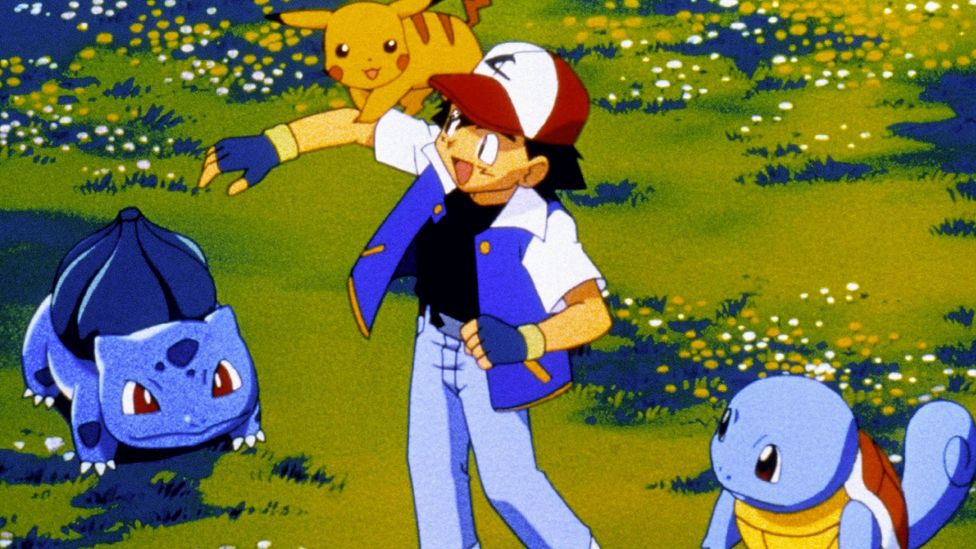
The Pokemon movie franchise was part of the game’s global popularity (Credit: Alamy)
This was something Tajiri knew from personal experience. Tellingly, the storyline of the Pokemon games that launched the series, opened with the player-character immersed in a traditional video game played on a television, who then put down the controller and headed outside – even as his mother remained glued to her own TV. The aspirational message was obvious. The previous generation who had so transformed the landscape would be of little help. This was a world where young people would need to forge new tools and allies to make their way.
The next level
After dozens upon dozens of sequels and offshoots, the Pokemon fad finally faded in the 2000s. Then came a true game-changer: Pokemon Go, developed by the Google spin-off Niantic Labs and released in 2016. It was an augmented reality app that transformed smartphones into real-life Pokemon detectors, using GPS data to superimpose the monsters atop a live view of the user’s surroundings. The combination of Silicon Valley technology and Japanese characters proved absolutely irresistible to players. There are some 300 million copies of Pokemon software in circulation, but to date Pokemon Go has been downloaded more than a billion times.
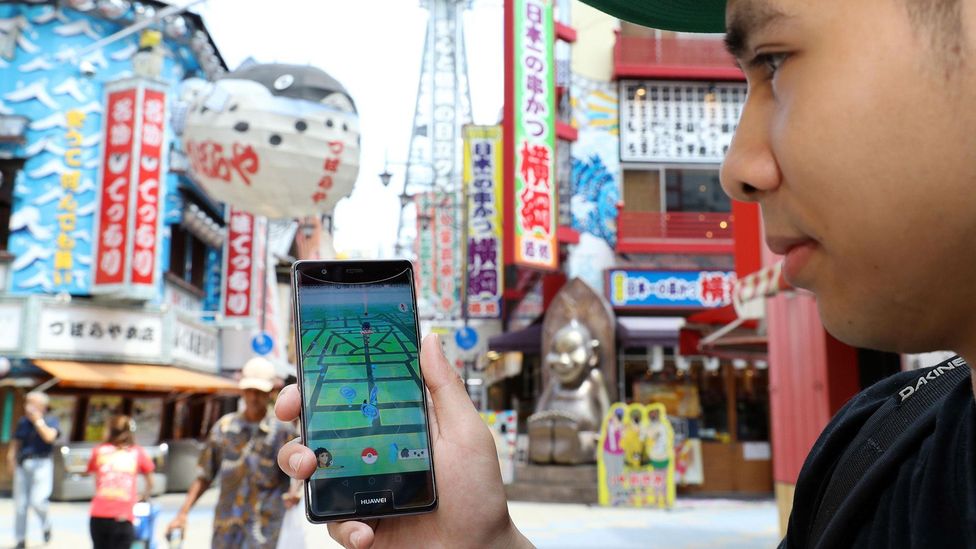
Pokemon Go exploded onto the scene in 2016 (Credit: Alamy)
Pokemon Go took Tajiri’s original concept to a logical extreme, transforming the game that had taken the outdoors indoors back outdoors again. Part of the app’s massive success was due to the fact it was a superbly crafted, intuitive experience well suited to the subject matter. But it was also because of a change in the way society was spending its free time.
In the decades since the arrival of the Game Boy in 1989, video games had evolved from an escape or a diversion into a lifestyle – even an identity. Pokemon Go pulled us back into the real world even as we stayed online, plugged into social networks. And as children raised on games grew into adults who continued playing, it became common to see entire families hunting for Dragonites, Snorlaxes, and Alakazams in the wilds of their own neighbourhoods.
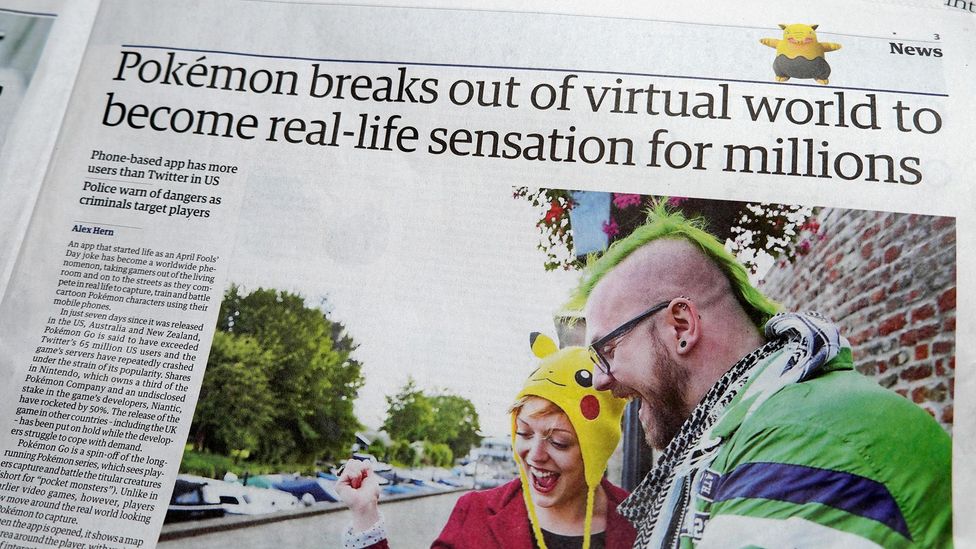
The popularity of the augmented reality game spread like wildfire across the world (Credit: Alamy)
In the Tokyo suburb in which I live, I often see groups of citizens silently gather to catch some rare Pokemon that has appeared on a local street or park before just as quietly dispersing. Many are middle-aged or even elderly – reflecting an ageing-up of the gaming demographic continuing to unfold around the world.
We’ve come a long way from Tajiri’s first explorations on the Game Boy. They turned out to be a precursor to a whole new way we would experience our plugged-in, connected-yet-isolated modern realities in the Covid-19 era.
In 2019, it emerged that young activists in Hong Kong were using Pokemon Go to organise protests without tipping their hands to police. And in July 2020, Niantic Labs announced that it would donate $10m in profits from this summer’s (online) Pokemon Go Fest to causes supporting the Black Lives Matter. There’s an argument to be made that Pokemon didn’t just revolutionise the way we live our lives — it revolutionised revolution itself.
Matt Alt is the author of Pure Invention: How Japan’s Pop Culture Conquered the World
—
If you would like to comment on this story or anything else you have seen on BBC Culture, head over to our Facebook page or message us on Twitter.
And if you liked this story, sign up for the weekly bbc.com features newsletter, called The Essential List. A handpicked selection of stories from BBC Future, Culture, Worklife and Travel, delivered to your inbox every Friday.


